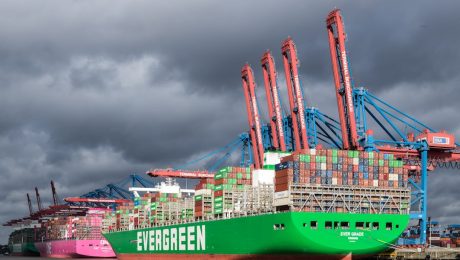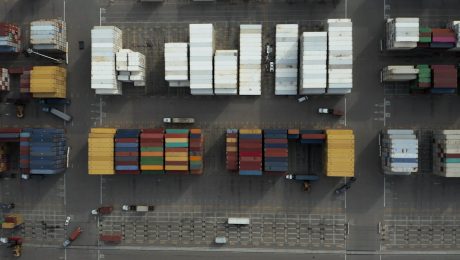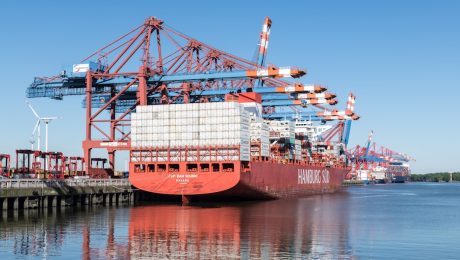In today’s competitive global market, achieving and maintaining ISO compliance is no longer a luxury but a necessity for businesses aiming for sustained growth and success. ISO standards, particularly ISO 9001 (Quality Management Systems) and ISO 14001 (Environmental Management Systems), provide a framework for organizations to optimize their production processes, enhance product quality, and minimize environmental impact. This comprehensive guide delves into the key elements of implementing ISO-compliant production processes, offering practical strategies and insights to help your organization achieve and maintain compliance.
Understanding ISO Standards and Their Relevance to Production
ISO standards are internationally recognized guidelines that specify requirements for various management systems. ISO 9001 focuses on establishing, implementing, maintaining, and continually improving a quality management system (QMS). This means defining processes to ensure consistent product quality that meets customer requirements. ISO 14001, on the other hand, focuses on environmental management, outlining requirements for establishing, implementing, maintaining, and continually improving an environmental management system (EMS). For production processes, this translates to minimizing waste, reducing pollution, and conserving resources. Both standards emphasize a systematic approach, involving planning, implementation, monitoring, review, and improvement. Compliance demonstrates a commitment to quality, environmental responsibility, and operational excellence, boosting your company’s reputation and attracting customers who value sustainability.
Implementing a Robust Quality Management System (QMS)
A robust QMS is the cornerstone of ISO 9001 compliance. This involves defining clear processes for every stage of production, from raw material procurement to finished product delivery. Key elements include:
- Process Mapping: Documenting each step of the production process, identifying potential bottlenecks and areas for improvement.
- Quality Control Checks: Implementing regular checks at various stages to ensure products meet specifications and standards.
- Corrective and Preventive Actions (CAPA): Establishing a system for identifying and addressing deviations from standards, preventing recurrence of defects.
- Documentation and Record Keeping: Maintaining detailed records of all processes, quality checks, and corrective actions.
- Internal Audits: Conducting regular internal audits to assess the effectiveness of the QMS and identify areas for improvement.
- Management Review: Regularly reviewing the QMS performance to ensure its continued effectiveness and alignment with business objectives.
Integrating Environmental Management into Production Processes (ISO 14001)
ISO 14001 compliance requires integrating environmental considerations into every aspect of production. This involves identifying environmental aspects – elements of your operations that can interact with the environment – and associated impacts, both positive and negative. Key steps include:
- Environmental Impact Assessment: Conducting a thorough assessment to identify potential environmental impacts of your production processes.
- Waste Reduction and Management: Implementing strategies to minimize waste generation and properly manage waste disposal in accordance with regulations.
- Energy Efficiency: Implementing measures to reduce energy consumption throughout the production process.
- Pollution Prevention: Implementing controls to prevent pollution from air, water, and land sources.
- Compliance Monitoring: Regularly monitoring compliance with environmental regulations and permits.
- Emergency Preparedness and Response: Developing and implementing plans to address environmental emergencies.
Leveraging Lean Manufacturing and Six Sigma for Enhanced Efficiency
Lean manufacturing and Six Sigma methodologies can significantly enhance the efficiency and effectiveness of ISO-compliant production processes. Lean principles focus on eliminating waste, improving workflow, and optimizing resource utilization. Six Sigma aims to reduce variation and defects in processes, leading to higher quality and consistency. By integrating these methodologies into your QMS and EMS, you can achieve significant improvements in productivity, reduce costs, and improve customer satisfaction. This includes implementing tools like value stream mapping, 5S methodology, and statistical process control (SPC).
Continuous Improvement and the ISO Cycle of Improvement (PDCA)
ISO standards emphasize continuous improvement. The Plan-Do-Check-Act (PDCA) cycle is a fundamental framework for achieving this. This iterative process involves:
- Plan: Identifying areas for improvement, setting objectives, and developing action plans.
- Do: Implementing the action plans and monitoring progress.
- Check: Evaluating the results and identifying any deviations from the plan.
- Act: Taking corrective actions, standardizing improvements, and documenting lessons learned.
By consistently applying the PDCA cycle, organizations can continuously refine their production processes, enhancing efficiency, quality, and compliance.
Implementing ISO-compliant production processes requires a significant commitment to change and improvement. However, the benefits—enhanced quality, reduced costs, improved efficiency, increased customer satisfaction, and a stronger reputation—far outweigh the initial investment. By embracing a systematic approach, leveraging best practices, and fostering a culture of continuous improvement, your organization can successfully navigate the path to ISO compliance and achieve sustainable success.
SEO-Friendly Tags:
- ISO 9001
- ISO 14001
- Production Process Optimization
- Quality Management Systems
- Environmental Management Systems
Steel, a cornerstone of modern construction and engineering, continues to demonstrate its remarkable versatility across a vast array of applications. Its strength, durability, and cost-effectiveness make it an ideal material for tackling complex engineering challenges. This blog post delves into several compelling case studies that highlight the innovative and impactful use of steel in diverse projects.
1. Skyscraper Construction: Reaching New Heights with Steel
The construction of skyscrapers presents unique engineering hurdles, demanding materials that can withstand immense pressure and seismic activity. Steel’s high strength-to-weight ratio makes it the preferred choice for building towering structures. Consider the Burj Khalifa, the world’s tallest building. Its intricate steel framework, meticulously designed and constructed, allows for its remarkable height and stability. The steel structure not only supports the building’s weight but also provides flexibility, enabling it to withstand strong winds and earthquakes. The use of high-strength steel grades and advanced welding techniques were crucial in achieving this feat of engineering. This case study showcases steel’s capacity to push the boundaries of architectural design and engineering possibilities.
2. Bridge Engineering: Spanning Gaps with Steel’s Strength
Bridges, vital links in transportation infrastructure, often require materials capable of withstanding significant stress and fatigue. Steel’s inherent strength and weldability make it a perfect material for constructing bridges of various types, from simple beam bridges to complex suspension bridges. The Golden Gate Bridge, a globally recognized icon, demonstrates the impressive capabilities of steel in bridge engineering. Its iconic suspension design utilizes massive steel cables and a robust steel deck structure to support the immense weight and traffic load. The bridge’s longevity and resilience are a testament to the durability and reliability of steel in demanding environments. Furthermore, advancements in steel alloys and corrosion protection techniques have extended the lifespan of steel bridges significantly, reducing maintenance costs and ensuring long-term structural integrity.
3. Infrastructure Projects: Steel’s Role in Sustainable Development
Steel plays a crucial role in building sustainable infrastructure. From railway lines and pipelines to large-scale industrial plants, steel’s versatility and recyclability contribute to environmentally conscious construction practices. Consider the high-speed rail networks being developed worldwide. Steel’s strength and durability are essential for building tracks that can withstand the high speeds and heavy loads of these trains. Moreover, the recyclability of steel reduces the environmental impact of construction and demolition. The use of recycled steel in infrastructure projects minimizes the demand for virgin materials, lowering carbon emissions and promoting resource efficiency. This exemplifies steel’s contribution to sustainable development goals.
4. Automotive Industry: Steel’s Contribution to Vehicle Safety
The automotive industry heavily relies on steel for its strength, formability, and cost-effectiveness. Modern vehicles incorporate advanced high-strength steel (AHSS) alloys to enhance safety and fuel efficiency. AHSS allows for the creation of lighter, yet stronger, vehicle bodies, improving fuel economy and reducing emissions. The use of tailored blanks, which combine different steel grades in a single component, further optimizes vehicle weight and performance. In the event of a collision, the strategically placed AHSS components absorb and dissipate impact energy, protecting passengers. This exemplifies steel’s pivotal role in enhancing vehicle safety and environmental performance.
5. Offshore Wind Energy: Steel’s Role in Renewable Energy Infrastructure
The global transition towards renewable energy sources has spurred significant advancements in offshore wind turbine technology. Steel plays a critical role in constructing the massive foundations and support structures for these turbines. The offshore environment presents harsh conditions, including strong winds, waves, and corrosion. Specialized steel alloys, designed to withstand these challenging conditions, are crucial for ensuring the long-term reliability and safety of offshore wind farms. The construction of these massive structures requires advanced engineering and fabrication techniques, showcasing steel’s capacity to support the growth of sustainable energy infrastructure. The durability and strength of steel contribute to the cost-effectiveness and longevity of offshore wind farms, making them a viable and sustainable energy source.
These case studies merely scratch the surface of steel’s vast applications. Its adaptability, strength, and sustainability make it a crucial material for addressing global challenges in construction, infrastructure, and renewable energy. The continuous development of new steel alloys and fabrication techniques further expands its potential, ensuring its continued importance in shaping the future.
SEO Tags:
Steel applications, Steel case studies, Engineering case studies, Construction materials, Sustainable infrastructure
In today’s interconnected world, businesses of all sizes rely on efficient and reliable logistics to navigate the complexities of global trade. This is where global logistics partner networks come into play. These networks, comprised of strategically aligned companies specializing in various aspects of the supply chain, offer a powerful solution for streamlining operations, reducing costs, and enhancing overall efficiency in international shipping.
The Foundation: Building a Robust Global Logistics Partner Network
Building a successful global logistics partner network requires careful consideration and strategic planning. It’s not simply about accumulating a large number of partners; it’s about selecting partners who complement each other’s strengths and possess the necessary expertise in specific geographic regions or logistical functions. Key considerations include:
- Geographic Coverage: Partners should provide comprehensive coverage across key markets, ensuring seamless transportation and handling throughout the entire supply chain.
- Specialized Expertise: Look for partners with specialized skills in areas such as customs brokerage, warehousing, freight forwarding, and last-mile delivery.
- Technology Integration: Seamless data exchange and real-time tracking capabilities are crucial for efficient communication and visibility throughout the supply chain. Partners should utilize compatible technologies and systems.
- Financial Stability and Reliability: Selecting financially sound and reputable partners is crucial to mitigate risks and ensure the timely and secure delivery of goods.
- Compliance and Regulations: Partners must be compliant with all relevant international trade regulations and customs procedures in their respective regions.
Optimizing Supply Chains: The Benefits of a Partner Network
Leveraging a global logistics partner network offers a multitude of benefits for businesses seeking to expand their international reach. These benefits translate directly into increased efficiency, cost savings, and improved customer satisfaction. Some key advantages include:
- Reduced Costs: Consolidating logistics operations through a network of partners can lead to significant cost savings through economies of scale and optimized transportation routes.
- Improved Efficiency: Streamlined processes and seamless communication between partners minimize delays and bottlenecks, leading to faster delivery times and improved overall efficiency.
- Enhanced Visibility and Tracking: Real-time tracking and monitoring of shipments provide greater transparency and control over the entire supply chain, allowing businesses to proactively address potential issues.
- Increased Flexibility and Scalability: Partner networks offer the flexibility to scale operations up or down as needed, adapting to changing market demands and seasonal fluctuations.
- Risk Mitigation: Diversifying logistics operations across multiple partners helps mitigate risks associated with disruptions such as natural disasters, political instability, or unexpected delays.
Navigating Complexity: Technology’s Role in Global Logistics Networks
Technology plays a pivotal role in the success of modern global logistics partner networks. Advanced technologies such as:
- Transportation Management Systems (TMS): These systems optimize transportation planning, routing, and scheduling, improving efficiency and reducing costs.
- Warehouse Management Systems (WMS): WMS solutions streamline warehouse operations, improving inventory management, order fulfillment, and overall warehouse productivity.
- Global Positioning Systems (GPS): Real-time tracking of shipments using GPS technology provides valuable insights into shipment location and status, enhancing visibility and security.
- Blockchain Technology: Blockchain can enhance transparency and security by providing an immutable record of transactions and shipments throughout the supply chain.
- Artificial Intelligence (AI) and Machine Learning (ML): AI and ML can be used to predict potential disruptions, optimize routes, and improve decision-making throughout the logistics process.
These technologies are crucial for facilitating seamless data exchange, real-time tracking, and improved collaboration between partners within the network.
Building Trust and Collaboration: Key to Successful Partnerships
The success of a global logistics partner network hinges on strong relationships built on trust and collaboration. Effective communication, shared goals, and mutual respect are essential for fostering a successful partnership. Key elements include:
- Clear Communication Protocols: Establishing clear communication channels and protocols ensures timely and accurate information sharing between partners.
- Shared Goals and Objectives: Partners should align on common goals and objectives to ensure a unified approach to achieving success.
- Performance Measurement and KPIs: Regular performance monitoring and key performance indicators (KPIs) help track progress, identify areas for improvement, and ensure accountability.
- Conflict Resolution Mechanisms: Establishing clear procedures for resolving conflicts and disagreements is crucial for maintaining strong relationships and preventing disruptions.
- Regular Reviews and Communication: Consistent communication and regular reviews ensure that the partnership remains aligned with evolving business needs and market dynamics.
Future Trends in Global Logistics Partner Networks
The global logistics landscape is constantly evolving, driven by technological advancements, changing consumer demands, and geopolitical factors. Some key future trends include:
- Increased Automation and Robotics: Automation and robotics will continue to play a significant role in improving efficiency and reducing labor costs in warehousing and transportation.
- Growth of E-commerce and Last-Mile Delivery: The explosive growth of e-commerce is driving demand for efficient and reliable last-mile delivery solutions.
- Sustainability and Green Logistics: Businesses are increasingly prioritizing sustainability, leading to a greater focus on green logistics practices and reducing the environmental impact of transportation.
- Data Analytics and Predictive Modeling: Data analytics and predictive modeling will play an increasingly important role in optimizing supply chains and mitigating risks.
- Increased Collaboration and Integration: Greater collaboration and integration between partners within the network will be essential for navigating the complexities of the global supply chain.
Businesses that embrace these trends and adapt their global logistics partner networks accordingly will be better positioned to succeed in the dynamic global marketplace.
Tags: global logistics, logistics partner network, international shipping, supply chain management, global trade
Steel, a ubiquitous material in construction, manufacturing, and countless other industries, is far from a monolithic substance. While carbon steel forms the bedrock of many applications, a vast array of alternative steel alloys offer superior properties tailored to specific needs. These advanced materials boast enhanced strength, corrosion resistance, durability, and other characteristics that make them indispensable in modern engineering and design.
1. Stainless Steel: The Corrosion Conqueror
Stainless steel, a family of iron-based alloys containing at least 10.5% chromium, stands as a prime example of an alternative steel alloy. The chromium content creates a passive oxide layer on the surface, protecting it from corrosion and oxidation. This inherent resistance to rust makes stainless steel ideal for applications exposed to harsh environments, such as marine structures, chemical processing equipment, and food-handling facilities. Different grades of stainless steel, categorized by their chromium, nickel, and other alloying element content (like molybdenum and manganese), offer varying degrees of corrosion resistance, strength, and workability. Austenitic stainless steels (like 304 and 316) are known for their ductility and weldability, while martensitic and ferritic grades offer higher strength but may be less resistant to certain types of corrosion.
2. High-Strength Low-Alloy (HSLA) Steel: Strength Without the Weight
HSLA steels represent another crucial category of alternative steel alloys. These materials achieve significantly higher strength compared to carbon steel through the addition of small percentages of alloying elements like copper, vanadium, niobium, and titanium. The key advantage of HSLA steel lies in its ability to offer superior strength-to-weight ratios. This makes them highly desirable in applications where weight reduction is crucial, such as automotive manufacturing, construction of bridges and skyscrapers, and the production of pipelines. The enhanced strength allows for the use of thinner sections of steel, leading to lighter structures without compromising on structural integrity. Furthermore, HSLA steels often exhibit improved formability and weldability compared to high-carbon steels.
3. Tool Steels: Precision and Durability in Action
Tool steels are a specialized class of steel alloys designed for their exceptional hardness, wear resistance, and ability to maintain their cutting edge even under extreme conditions. These alloys contain substantial amounts of alloying elements such as tungsten, molybdenum, chromium, vanadium, and cobalt. These elements contribute to the formation of hard carbides within the steel matrix, resulting in superior hardness and resistance to abrasion. The specific composition of a tool steel dictates its suitability for different applications, ranging from cutting tools (drills, milling cutters, taps) to molds and dies used in forging and casting. High-speed steels (HSS), a subset of tool steels, are particularly notable for their ability to retain hardness even at elevated temperatures, making them ideal for high-speed machining operations.
4. Maraging Steels: Reaching for Exceptional Strength
Maraging steels, a family of iron-nickel-based alloys, are renowned for their exceptionally high strength and toughness. The name “maraging” is derived from “martensite aging,” referring to the heat treatment process that produces the desired high strength. These steels typically contain 18-25% nickel and small amounts of other elements like cobalt, molybdenum, and titanium. The aging process leads to the precipitation of intermetallic phases, which significantly enhance the strength without compromising ductility. Maraging steels are employed in demanding applications requiring extreme strength and toughness, such as aerospace components, pressure vessels, and high-performance sporting equipment.
5. Weathering Steel (COR-TEN): Nature’s Protective Coating
Weathering steel, also known as COR-TEN steel, stands apart due to its unique ability to form a stable, protective rust layer that inhibits further corrosion. This self-patinating characteristic reduces the need for painting or other protective coatings, leading to lower maintenance costs and a distinctive aesthetic appeal. The alloying elements in weathering steel, including copper, chromium, nickel, and phosphorus, contribute to the formation of this protective patina. This makes it an environmentally friendly and cost-effective option for architectural applications, bridges, and other structures exposed to the elements. The characteristic rust-like appearance of weathering steel is often embraced for its visual appeal, contributing to its popularity in modern design.
The world of alternative steel alloys is constantly evolving, with ongoing research and development leading to new materials with even more specialized properties. Understanding the unique characteristics of these different alloys is crucial for engineers and designers seeking to optimize performance, durability, and cost-effectiveness in a wide range of applications.
SEO Tags:
- Alternative Steel Alloys
- Stainless Steel Grades
- High-Strength Low-Alloy Steel
- Tool Steel Applications
- Weathering Steel Properties
Shipping goods internationally can seem daunting, a complex maze of regulations, logistics, and potential pitfalls. However, with careful planning and the right knowledge, you can navigate this process smoothly and efficiently. This comprehensive guide will walk you through every step, ensuring your overseas shipment arrives safely and on time.
1. Choosing the Right Shipping Method: Finding the Perfect Fit for Your Goods
Selecting the appropriate shipping method is paramount. Your choice will depend on several factors, including the type of goods, their value, urgency, and destination. Here’s a breakdown of common options:
- Sea Freight (Ocean Freight): Ideal for large, heavy, and less time-sensitive shipments. It’s generally the most cost-effective option, but transit times are longer.
- Air Freight: Best suited for smaller, high-value, or time-sensitive goods. Faster than sea freight but significantly more expensive.
- Courier Services (Express Shipping): Excellent for smaller packages requiring fast delivery. Offers tracking and door-to-door service, but can be costly.
- Rail Freight: A growing option, particularly for shipments between countries connected by extensive rail networks. Offers a balance between speed and cost.
Consider factors like insurance options, tracking capabilities, and the carrier’s reputation when making your decision. Requesting quotes from multiple carriers is highly recommended to compare prices and services.
2. Mastering the Art of Packaging: Protecting Your Goods During Transit
Proper packaging is crucial to prevent damage during transit. The packaging must be robust enough to withstand the rigors of handling and transportation. Key considerations include:
- Material Selection: Choose sturdy boxes, crates, or pallets appropriate for the goods’ weight and fragility. Use cushioning materials like bubble wrap, foam peanuts, or air pillows to protect against shocks and vibrations.
- Proper Sealing: Securely seal all packages with strong tape, ensuring they can withstand rough handling. Reinforce corners and edges for added protection.
- Clear Labeling: Clearly label packages with the recipient’s address, your address, and any special handling instructions (e.g., “Fragile,” “Handle with Care”). Use both English and the destination country’s language if necessary.
- Weight and Dimensions: Accurately weigh and measure your packages. This information is essential for calculating shipping costs and ensuring compliance with carrier regulations.
Invest in quality packaging materials; it’s a small price to pay to avoid costly damage claims.
3. Navigating Customs and Regulations: Ensuring Smooth Border Crossing
International shipping involves navigating complex customs regulations. Failure to comply can lead to delays, fines, or even the seizure of your goods. Key steps include:
- Import/Export Licenses: Determine if any licenses or permits are required for your goods in both the exporting and importing countries.
- Harmonized System (HS) Codes: Accurately classify your goods using the HS Code system. This is crucial for customs declarations and determining tariffs.
- Commercial Invoice: Prepare a detailed commercial invoice including product descriptions, quantity, value, and payment terms.
- Packing List: Provide a packing list detailing the contents of each package, including weight and dimensions.
- Certificate of Origin: This document verifies the origin of your goods, which may be required by customs authorities.
Engaging a customs broker can significantly simplify this process, especially for complex shipments.
4. Securing Your Shipment: Insurance and Risk Management
Protecting your shipment against loss or damage is vital. Consider these risk mitigation strategies:
- Cargo Insurance: Purchase cargo insurance to cover potential losses or damages during transit. Several types of insurance are available, each offering different levels of coverage.
- Tracking Your Shipment: Utilize tracking services to monitor your shipment’s progress and identify any potential delays or problems.
- Choosing a Reputable Carrier: Select a carrier with a strong reputation for reliability and efficient service.
- Document Retention: Maintain copies of all shipping documents, including invoices, packing lists, and insurance certificates, for your records.
Proactive risk management can save you significant time, money, and frustration.
5. Budgeting and Cost Optimization: Managing Your Shipping Expenses
Overseas shipping can be expensive. Effective budgeting and cost optimization strategies are essential:
- Compare Carrier Quotes: Obtain quotes from multiple carriers to compare prices and services.
- Negotiate Rates: Don’t hesitate to negotiate rates with carriers, especially for larger or recurring shipments.
- Optimize Packaging: Efficient packaging minimizes shipping weight and dimensions, leading to lower costs.
- Consolidate Shipments: Combine multiple shipments into one to reduce per-unit shipping costs.
- Consider Incoterms: Understand Incoterms (International Commercial Terms) to clarify responsibilities and costs between buyer and seller.
Careful planning and smart choices can significantly reduce your overall shipping expenses.
By following these steps, you can significantly improve the efficiency and success of your overseas shipping endeavors. Remember that thorough planning and attention to detail are key to a smooth and cost-effective international shipping experience.
Tags: overseas shipping, international shipping, shipping planning, export shipping, import shipping
The steel industry, a cornerstone of global infrastructure, has historically been a significant contributor to greenhouse gas emissions. However, a revolution is underway, driven by the urgent need for sustainable practices. This post explores the innovative advancements in eco-friendly steel manufacturing, showcasing the technologies and strategies shaping a greener future for this vital industry.
1. The Environmental Footprint of Traditional Steelmaking: Understanding the Challenge
Traditional steelmaking, primarily using the blast furnace-basic oxygen furnace (BF-BOF) route, is an energy-intensive process with a substantial carbon footprint. The process relies heavily on coking coal, a major source of carbon dioxide (CO2) emissions. Furthermore, the production of coke itself generates significant amounts of pollutants like particulate matter and sulfur oxides. The high energy demands of the process, often relying on fossil fuels, further exacerbate the environmental impact. The extraction of iron ore and other raw materials also contributes to land degradation and water pollution. Understanding the scale of this environmental burden is crucial for driving the adoption of greener alternatives.
2. Carbon Capture, Utilization, and Storage (CCUS) in Steel Production
Carbon Capture, Utilization, and Storage (CCUS) technologies offer a promising pathway to mitigate CO2 emissions from steelmaking. These technologies capture CO2 emissions at the source, preventing their release into the atmosphere. The captured CO2 can then be utilized in various applications, such as enhanced oil recovery or the production of chemicals, or stored permanently underground in geological formations. While CCUS is not a complete solution on its own, it can significantly reduce the carbon intensity of steel production in the short-to-medium term, allowing for a gradual transition to more sustainable processes. The economic viability and scalability of CCUS remain key challenges, but ongoing research and development are paving the way for wider adoption.
3. Hydrogen-Based Steelmaking: A Paradigm Shift
Hydrogen-based steelmaking represents a paradigm shift in the industry, offering the potential for virtually CO2-free steel production. Instead of using coking coal, this process utilizes hydrogen as a reducing agent in the direct reduction of iron ore. This eliminates the direct CO2 emissions associated with coal combustion. The hydrogen used can be produced from renewable energy sources, further reducing the overall carbon footprint. While the technology is still under development and faces challenges related to hydrogen production, storage, and transportation costs, significant progress is being made, with several pilot plants already operational. The potential for a truly green steel industry hinges significantly on the successful deployment of hydrogen-based steelmaking.
4. Sustainable Raw Material Sourcing and Recycling
Minimizing the environmental impact of steel production also requires a focus on sustainable raw material sourcing and recycling. This involves responsible iron ore mining practices that minimize land disturbance and water pollution, as well as the utilization of recycled steel scrap. Steel is highly recyclable, and incorporating recycled scrap into the production process significantly reduces the energy and resource requirements compared to using virgin materials. Increasing the use of recycled steel is crucial for reducing the overall environmental footprint of the industry and promoting a circular economy model. Initiatives focused on improving the collection and processing of steel scrap are essential for maximizing the effectiveness of this approach.
5. Energy Efficiency Improvements and Process Optimization
Improving energy efficiency and optimizing steelmaking processes are crucial for reducing the industry’s carbon footprint. This involves implementing advanced process control systems, optimizing furnace operations, and utilizing more energy-efficient technologies. Investing in renewable energy sources to power steel plants, such as solar and wind power, can further reduce reliance on fossil fuels. The integration of smart technologies and data analytics can help identify and address inefficiencies, leading to significant energy savings and reduced emissions. These optimization strategies, combined with other sustainable practices, contribute to a more holistic approach to eco-friendly steel manufacturing.
The transition to eco-friendly steel manufacturing is a complex undertaking, requiring collaboration across the entire value chain. However, the innovations discussed above are paving the way for a more sustainable future for this vital industry, contributing to a greener and more environmentally responsible world.
SEO Tags:
- Eco-friendly steel
- Green steel manufacturing
- Sustainable steel production
- Hydrogen steelmaking
- Carbon capture steel
body { font-family: sans-serif; line-height: 1.6; }
h1, h2, h3 { color: #333; }
img { max-width: 100%; height: auto; display: block; margin: 20px auto; }
.gallery-image { float:left; margin: 10px; width: 30%; }
Steel, a ubiquitous material in modern life, boasts an unparalleled combination of strength, durability, and versatility. From towering skyscrapers to intricate machinery, its applications are virtually limitless. This visual gallery explores the diverse ways steel shapes our world, showcasing its remarkable strength and adaptability.
1. Steel in Construction: Reaching for the Sky
Steel’s high tensile strength and formability make it an ideal material for constructing buildings of all sizes. From the skeletal frames of skyscrapers that pierce the clouds to the intricate supports of residential buildings, steel provides the necessary structural integrity. Its ability to withstand immense loads, coupled with its relatively lightweight nature compared to other construction materials like concrete, allows for taller, more complex designs. The images below showcase the impressive scale and architectural ingenuity enabled by steel in modern construction.



2. Steel in Infrastructure: Building a Better World
Beyond buildings, steel plays a crucial role in shaping our infrastructure. Bridges, spanning vast distances and carrying heavy traffic, are prime examples of steel’s structural prowess. Railways, highways, and tunnels also rely heavily on steel for their construction, ensuring stability and longevity. Steel’s resistance to corrosion, when properly treated, makes it a long-lasting and reliable material for infrastructure projects, contributing to the safety and efficiency of our transportation networks.



3. Steel in Manufacturing: The Engine of Industry
Steel forms the backbone of countless manufacturing processes. From the production of automobiles and machinery to the creation of consumer goods, steel’s malleability and strength are essential. Its ability to be shaped, welded, and formed into intricate components makes it an indispensable material for a vast array of industries. The precision and durability of steel components are vital for the functionality and longevity of manufactured products.



4. Steel in Energy: Powering Our Future
The energy sector also relies heavily on steel. Power plants, pipelines, and wind turbines all incorporate substantial amounts of steel due to its strength and resistance to extreme temperatures and pressures. Steel pipelines transport vast quantities of natural gas and oil across continents, while wind turbine towers utilize steel’s strength to withstand the forces of nature. Steel’s role in renewable energy infrastructure showcases its contribution to a sustainable future.



5. Steel in Art and Design: A Testament to Creativity
Beyond its functional applications, steel’s aesthetic qualities have made it a popular choice in art and design. Sculptures, architectural features, and furniture often incorporate steel for its sleek lines, strength, and ability to be intricately shaped. The versatility of steel allows artists and designers to express their creativity, creating stunning pieces that combine functionality with artistic expression.



This visual gallery only scratches the surface of steel’s vast applications. Its enduring strength and adaptability continue to shape our world, making it a truly remarkable material.
Tags: steel applications, steel uses, steel construction, steel infrastructure, steel manufacturing
“`
**Note:** Remember to replace the placeholder image URLs (`placeholder-skyscraper.jpg`, etc.) with actual image URLs. You’ll need to find suitable images to illustrate each section effectively. The HTML provides the basic structure and styling; you can enhance it further with CSS for improved visual appeal.
The number 500. A seemingly simple numerical value, yet it holds a surprising depth of meaning and historical significance across various cultures and disciplines. This post delves into the multifaceted world of 500, exploring its mathematical properties, historical context, cultural representations, and even its presence in modern life.
500 in Mathematics: A Milestone of Magnitude
In the realm of mathematics, 500 is a composite number, divisible by 1, 2, 4, 5, 10, 20, 25, 50, 100, 125, 250, and 500. Its prime factorization is 22 x 53. This seemingly straightforward description belies its importance in various mathematical concepts. For example, 500 is a significant benchmark in rounding and estimation, often used as a convenient round number for simplifying calculations. It also plays a role in various mathematical sequences and series. Consider its use in representing half a thousand, a convenient midpoint in many statistical analyses and data representations. The number’s divisibility also makes it useful in problems involving fractions and proportions.
500 Years: Historical Events and Anniversaries
The year 500 AD marks a significant point in history, falling within the late Roman Empire and the early medieval period. While not as widely celebrated as some other centuries’ milestones, 500 AD represents a transition period between eras, a time of significant political, social, and religious upheaval. Many historical events can be traced back 500 years, offering valuable insights into the evolution of societies and civilizations. For example, considering events 500 years ago from the present day (around 1524 AD) allows us to explore the Renaissance, the Reformation, and the early stages of global exploration. The 500th anniversaries of key events, such as the Reformation or the discovery of America, often serve as focal points for historical reflection and commemoration.
Cultural Significance of 500: Symbolism and Representations
The number 500 carries symbolic weight in different cultures. While not as universally recognized as numbers like 7 or 13, its significance is often context-dependent. In some cultures, 500 might be associated with prosperity or abundance due to its connection to larger quantities. In others, it may hold specific religious or spiritual meaning. The interpretation of 500 often relies on its context within a specific cultural framework. For example, the use of 500 in monetary denominations (like the 500 Rupee note in India or the former 500 Lira note in Italy) imbues it with economic connotations. Examining the use of 500 in art, literature, and folklore can reveal further insights into its cultural significance.
500 in Modern Life: Everyday Encounters
Despite its historical and mathematical significance, 500 also plays a crucial role in our modern lives. From the capacity of many everyday items (like the 500 ml water bottle) to the pricing of goods and services, 500 is a common numerical benchmark. Consider the use of 500 in social media follower counts, website traffic statistics, or even the number of entries in a database. These everyday occurrences highlight the prevalence of 500 as a quantifiable measure in our digital and physical worlds. The ubiquity of 500 in modern contexts shows its continued relevance beyond its historical and mathematical underpinnings.
500 and the Future: Continued Relevance
As we move forward, the number 500 will likely continue to hold significance in various aspects of our lives. Its mathematical properties will remain useful in calculations and estimations, while its cultural and historical associations will continue to be explored and reinterpreted. Future milestones and anniversaries (like the 500th anniversary of future significant events) will provide opportunities for reflection and commemoration. Furthermore, the continued use of 500 in everyday contexts ensures its ongoing relevance in our quantitative understanding of the world. The exploration of 500’s meaning will undoubtedly evolve alongside our society and its changing values.
In conclusion, the seemingly simple number 500 reveals a rich tapestry of meanings and connections across diverse fields. From its fundamental properties in mathematics to its historical and cultural significance, 500 offers a fascinating lens through which to examine the human experience.
Tags: 500, five hundred, number 500, historical significance 500, cultural symbolism 500
The world relies on efficient and reliable pipeline systems for the transportation of crucial resources like water, gas, and oil. Maintaining the integrity of these pipelines is paramount, and the choice of pipe material plays a significant role. In recent years, polyethylene (PE)-coated line pipes have emerged as a game-changer, offering a compelling combination of strength, durability, and cost-effectiveness. This comprehensive guide delves into the numerous benefits of PE-coated line pipes, explaining why they are becoming the preferred choice for numerous applications.
Unmatched Corrosion Resistance: Extending Pipeline Lifespan
Corrosion is a major threat to the longevity and safety of traditional steel pipelines. Exposure to moisture, soil chemicals, and electrochemical reactions can lead to significant degradation, requiring costly repairs and replacements. PE coating provides an exceptional barrier against these corrosive elements. The polyethylene layer acts as a protective shield, preventing contact between the steel pipe and the surrounding environment. This significantly extends the lifespan of the pipeline, reducing the frequency of maintenance and replacement, and ultimately lowering overall lifecycle costs. The thickness of the PE coating can be tailored to meet specific environmental conditions, ensuring optimal protection even in highly corrosive environments.
Enhanced Durability and Mechanical Strength: Withstanding External Forces
Beyond corrosion resistance, PE-coated line pipes exhibit superior durability and mechanical strength. The PE coating adds an extra layer of protection against mechanical damage, such as abrasion, impact, and stress cracking. This is particularly crucial in challenging terrains or environments where pipelines are susceptible to external forces. The coating helps to absorb impacts, minimizing the risk of damage to the underlying steel pipe. This enhanced durability translates to fewer pipeline failures and reduced downtime, leading to significant operational savings.
Cost-Effectiveness: A Long-Term Investment with Significant ROI
While the initial cost of PE-coated line pipes might be slightly higher than uncoated steel pipes, the long-term benefits significantly outweigh the upfront investment. The extended lifespan, reduced maintenance requirements, and minimized repair costs result in a substantial return on investment (ROI). Moreover, the reduced downtime associated with fewer failures translates into significant operational savings. The overall lifecycle cost of PE-coated pipelines is demonstrably lower compared to traditional steel pipelines, making them a financially prudent choice.
Simplified Installation and Handling: Reducing Project Time and Costs
The smooth surface of the PE coating facilitates easier handling and installation of the pipes. This reduces the risk of damage during transportation and placement, further minimizing project costs. The improved handling characteristics also lead to faster installation times, allowing projects to be completed more efficiently. This streamlined process reduces labor costs and accelerates the project timeline, making PE-coated line pipes an attractive option for time-sensitive projects.
Environmental Friendliness: Minimizing Environmental Impact
The use of PE-coated line pipes contributes to a more environmentally responsible approach to pipeline construction and maintenance. The enhanced durability and longevity of these pipes reduce the need for frequent replacements, minimizing the environmental impact associated with the extraction, manufacturing, and disposal of traditional steel pipes. Furthermore, the excellent corrosion resistance prevents leakage and potential environmental contamination, contributing to a cleaner and safer environment.
In conclusion, PE-coated line pipes offer a compelling combination of benefits, making them a superior choice for a wide range of pipeline applications. From enhanced corrosion resistance and durability to cost-effectiveness and environmental friendliness, these pipes represent a significant advancement in pipeline technology, ensuring the reliable and efficient transportation of essential resources for years to come.
SEO-Friendly Tags:
- PE coated line pipes
- pipeline corrosion protection
- enhanced pipeline durability
- cost effective pipelines
- environmental friendly pipelines
International trade offers immense opportunities for growth and expansion, but it also presents a unique set of challenges. Navigating the complexities of global markets requires a proactive and comprehensive approach to risk management. Failure to adequately address these risks can lead to significant financial losses, reputational damage, and even the complete failure of a business venture. This guide explores the key risk areas in international trade and offers practical strategies for mitigation.
Political Risk in International Trade
Political risk encompasses a broad range of factors that can impact your business operations in foreign markets. These include government instability, changes in trade policy (tariffs, quotas, sanctions), nationalization or expropriation of assets, corruption, and even civil unrest or terrorism. Understanding the political landscape of your target market is crucial. Due diligence should include analyzing the country’s political stability, its legal framework, and its relationships with other nations. Mitigation strategies can include diversifying your markets, securing political risk insurance, and establishing strong relationships with local stakeholders.
Economic Risks: Currency Fluctuations and Market Volatility
Economic risks are inherent in international trade, primarily stemming from currency fluctuations and market volatility. Changes in exchange rates can significantly impact profitability, making it crucial to understand and manage currency risk. Market volatility, influenced by factors like economic downturns, inflation, and consumer confidence, can affect demand for your products or services. Strategies to mitigate economic risks include hedging currency exposures through forward contracts or options, diversifying your customer base, and developing flexible pricing strategies that can adapt to market fluctuations. Careful financial forecasting and scenario planning are also essential.
Logistical Challenges and Supply Chain Disruptions
The logistical complexities of international trade present a significant source of risk. These include delays in shipping, damage to goods during transit, customs clearance issues, and port congestion. Supply chain disruptions, whether due to natural disasters, geopolitical events, or pandemics, can severely impact your ability to deliver products or services. Robust risk management requires a well-defined supply chain strategy that includes multiple suppliers, diversified shipping routes, and contingency plans for potential disruptions. Investing in technology to track shipments and monitor supply chain performance can also significantly reduce logistical risks.
Legal and Regulatory Compliance in Global Markets
Navigating the legal and regulatory landscape of different countries is a critical aspect of international trade risk management. Each country has its own set of laws and regulations governing imports, exports, product standards, intellectual property, and data protection. Non-compliance can lead to hefty fines, legal disputes, and reputational damage. Thorough due diligence, including legal counsel specializing in international trade, is essential. Establishing clear processes for ensuring compliance with all relevant regulations is crucial. This includes staying up-to-date on changes in legislation and proactively addressing any potential compliance issues.
Credit and Counterparty Risk: Protecting Your Financial Interests
Extending credit to international buyers or relying on foreign suppliers introduces credit and counterparty risk. The risk of non-payment by a buyer or non-delivery by a supplier can have severe financial consequences. Thorough credit checks, using reputable credit reporting agencies, are essential. Using letters of credit or other forms of trade finance can help mitigate this risk by providing a layer of protection for both buyers and sellers. Establishing strong contractual agreements that clearly define responsibilities and liabilities is also crucial. Careful selection of partners with a proven track record of reliability is paramount.
Effective risk management in international trade is not a one-size-fits-all solution. The specific risks and appropriate mitigation strategies will vary depending on your industry, the countries you operate in, and the nature of your business. However, a proactive and comprehensive approach, incorporating the elements discussed above, is crucial for success in the global marketplace. Regular review and adaptation of your risk management strategy are essential to ensure it remains relevant and effective in the ever-changing landscape of international trade.
Conclusion
Successfully navigating the intricate world of international trade requires a sophisticated understanding and proactive management of inherent risks. By carefully assessing and mitigating political, economic, logistical, legal, and financial risks, businesses can significantly enhance their chances of success and profitability in the global market. Remember, consistent monitoring, adaptation, and a commitment to due diligence are key to long-term success in this dynamic environment.
Tags: international trade risk management, global trade risks, supply chain risk management, political risk insurance, import export compliance










